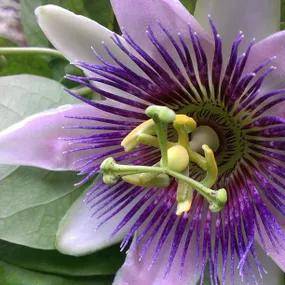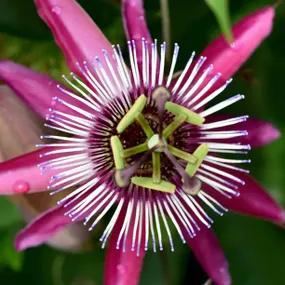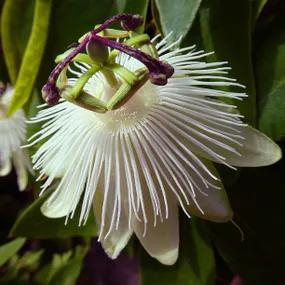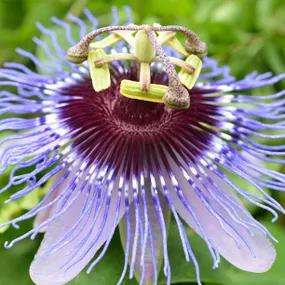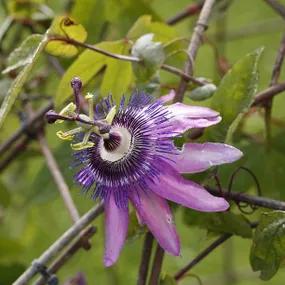Passion flowers are some of the most delightfully odd looking blooms around, and you don't (necessarily) need a greenhouse to give them a try.
Passion flower vines are quite short-lived, around seven or eight years is typical, very vigorous, and easy to propagate from cuttings.
Their hardiness is a bit tricky to make a firm statement about, because of how much difference a sheltered microclimate can make. In general, most of them are semi-hardy, tolerating temperatures down to -6 or -8C, but they may die back above ground if temperatures fall that low for several nights in a row.
Covering the base of the plant with straw and insulating the bottom metre or so of the vines with horticultural fleece will help them bounce back quickly if they do die back.
Browse all of our climbing plants.
- Order now, pay later: we don't charge your card until before delivery
- When your order is ready: your mail order climbing plants are delivered by next working day courier (not the next working day after ordering!)
- Friendly support: if there is anything wrong with your plants when you inspect them, Contact Us within 5 working days
UK Grown, using peat free compost.




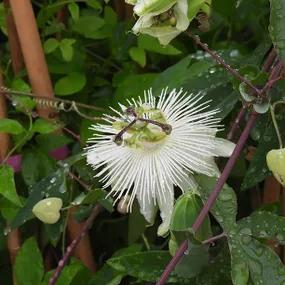
 2.webp)
